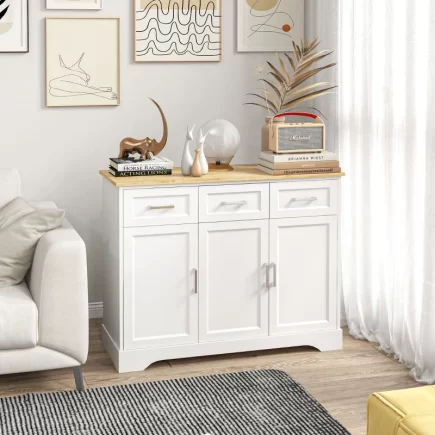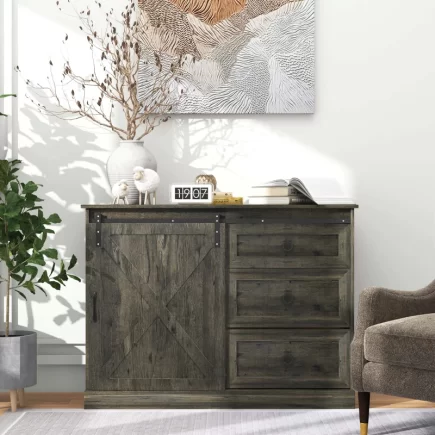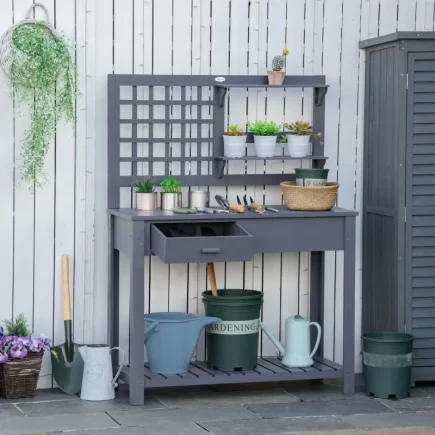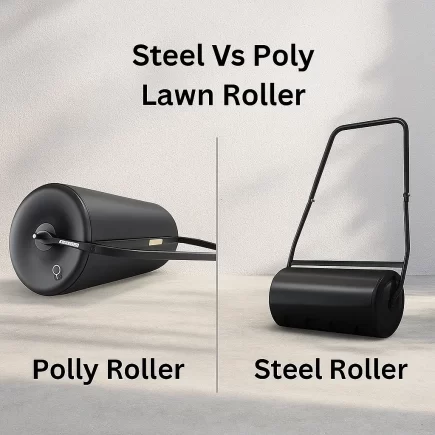Sheds are a natural home for mice and other rodents. With easy access to food, water, and shelter, your shed can become the perfect place for mice to nest. This is especially true during colder months when they are looking for a warm, safe place to hunker down. Mice can sneak in through tiny cracks, and once they’re in, they can cause substantial damage. Their nesting materials, such as cardboard, paper, or even insulation, can quickly degrade your shed’s condition.

Mice carry diseases like hantavirus, salmonella, and leptospirosis. They also leave droppings and urine, which can contaminate food or tools, and they can gnaw on wires, causing fire hazards. The good news is that preventing mice from entering your shed in the first place is entirely possible with the right strategies.
Simple Steps to Prevent Mice from Invading Your Shed
Step 1: Seal Gaps and Cracks
The most effective way to keep mice out of your shed is by sealing any potential entry points. Mice are small, agile creatures, and they can fit through a hole as small as a dime. If they find a way in, they’ll establish a nest and multiply quickly. By sealing all cracks and openings, you can eliminate the chance of mice finding their way in.
Key Methods to Seal Gaps and Cracks
- Inspect Around Doors, Windows, Vents, and Foundation
Walk around your shed, checking for cracks, gaps, and holes. Pay special attention to the corners, around the doors, and around any vents. Mice are great at squeezing through the smallest of spaces.
- Materials to Use
- Caulk: For small cracks or gaps, use caulk to fill them in.
- Steel Wool: Use steel wool for larger holes. Mice can’t chew through steel wool, making it an excellent option for sealing up entry points.
- Weather Stripping: Install weather stripping around the shed doors to prevent mice from sneaking in through gaps.
- Wire Mesh: For larger areas or vents, use wire mesh to create an impenetrable barrier.
- Caulk: For small cracks or gaps, use caulk to fill them in.

TIP: Pay special attention to areas where pipes, wires, or cables enter your shed. These entry points can be especially vulnerable.
Step 2: Preventing Mice by Removing Attractants
Mice are opportunistic creatures. If they find food or water in your shed, they’ll be drawn to it. This means eliminating potential food sources is crucial to preventing an infestation.
- Remove All Food Sources
- Pet Food: Don’t leave pet food out in the shed, as it can attract mice. Store it in airtight, rodent-proof containers.
- Birdseed: If you store bird seed, make sure it is in tightly sealed containers to prevent mice from accessing it.
- Grains and Seeds: Mice love grains, so keep any stored grains in airtight bins.
- Eliminate Water Sources
Mice need water to survive, so any leaky pipes or standing water in the shed can attract them. Ensure that there are no water sources in or around your shed.
Step 3: Organizing and Cleaning Your Shed
A messy, cluttered shed is an inviting place for mice. Cardboard boxes, old fabric, and piles of wood offer great nesting materials for rodents. Keeping your shed clean and organized will help deter them from moving in.
- Keep Your Shed Tidy
- Use Airtight Plastic Bins: Store items in plastic bins with tight-fitting lids to prevent mice from accessing them.
- Regularly Sweep and Clean: Sweep the floors and clean up any crumbs or debris that may attract mice.
- Remove Clutter: Get rid of unnecessary items that can be used as nesting materials. Avoid storing things like cardboard boxes, fabric, or wood directly on the ground.

- Declutter to Reduce Hiding Places
- Elevate items off the floor to reduce places where mice can hide and build nests.
- Use shelves and cabinets to store smaller items.
Step 4: Traps and Bait for Effective Mice Control
Sometimes, despite all your preventative measures, mice still manage to make their way into your shed. In these cases, traps and bait are an effective way to deal with an existing infestation.
Types of Traps:
- Snap Traps: These are the most common and effective traps. They kill mice instantly, ensuring a quick solution to the problem.
- Electronic Traps: These traps kill mice using an electric shock, offering a humane, quick solution.
- Live Traps: These traps allow you to capture mice alive so you can release them far from your shed.
- Bucket Traps: A DIY option that uses a bucket to drown mice once they are attracted by bait like peanut butter.

Tip: Check your traps regularly and replace the bait to ensure they remain effective. Also, make sure you place traps in high-traffic areas like near entry points.
Humane Methods for Mice Control
For those who prefer not to kill mice, humane traps offer an alternative. These traps allow you to capture the mice alive and release them elsewhere.
- Relocation
Once you’ve trapped the mice, take them at least 3-4 miles away to prevent them from finding their way back.
- Check Traps Regularly
Mice can suffer in live traps if left for too long. Make sure you check them frequently and release any captured mice promptly.
Humane methods are a great option if you’re concerned about the ethics of killing pests, but they require more effort and time for monitoring.
Cost-Effective and Eco-Friendly Solutions
Many people prefer non-toxic and cost-effective solutions to keep mice away, especially if you have pets or children around. Thankfully, there are plenty of household items you can use to prevent a rodent infestation without breaking the bank.
- Vinegar: Mice dislike the smell of vinegar. Mix equal parts of vinegar and water and spray it around potential entry points.
- Cayenne Pepper: Sprinkle cayenne pepper around your shed to deter mice. Its strong, spicy scent irritates their sensitive noses.
- DIY Bucket Traps: Set up a simple bucket trap using peanut butter or seeds as bait. When the mouse climbs into the bucket, it falls in and cannot escape.

These solutions are safe, affordable, and effective, making them ideal for family-friendly pest control.
Bonus Tip: If you want a natural way to control your mouse population, consider attracting predators like cats or owls.
Ongoing Prevention is Key
Keeping mice out of your shed requires a proactive approach. Seal entry points, use natural repellents, keep your shed clean, and set up traps if needed. Regular inspections and seasonal maintenance will help ensure that your shed remains a mouse-free space year-round.
Consider a Metal Shed for Added Protection
If you’re looking for an extra layer of security, consider investing in a metal shed. Brands like Aosom offer a variety of durable metal sheds and garden sheds that are naturally more resistant to rodents. Their sturdy, seamless construction makes it more difficult for mice to find their way in, offering an added level of protection compared to traditional wooden sheds. Whether you need extra storage space or a garden shed, choosing a metal option can be a smart investment to keep mice and other pests out for good.
FAQS
1. What is the best deterrent for mice in the shed?
The best deterrent is sealing entry points combined with peppermint oil. Mice cannot resist the strong scent, making it an excellent repellent.
2. Will mothballs keep mice out of my shed?
Mothballs can be effective but should be used carefully. Place them around the perimeter of your shed or near entry points, but be mindful of the toxicity to pets and children.
3. How can I tell if I have a mouse infestation in my shed?
Signs of a mouse infestation include droppings, gnaw marks on wood or wires, and visible nests made from paper or fabric. If you notice any of these signs, it’s time to take action and set traps or seal entry points.
4. What should I do if I catch a mouse in a live trap?
If you catch a mouse in a live trap, release it at least 3-4 miles away from your shed to ensure it doesn’t return. Always handle the trap carefully, and check it frequently to prevent stress on the mouse.
5. Do dryer sheets keep mice away?
Dryer sheets are often recommended as a deterrent for mice, but they aren’t highly effective. While they might have a slight impact on keeping mice away, traps or stronger repellents like peppermint oil are far more reliable.




























